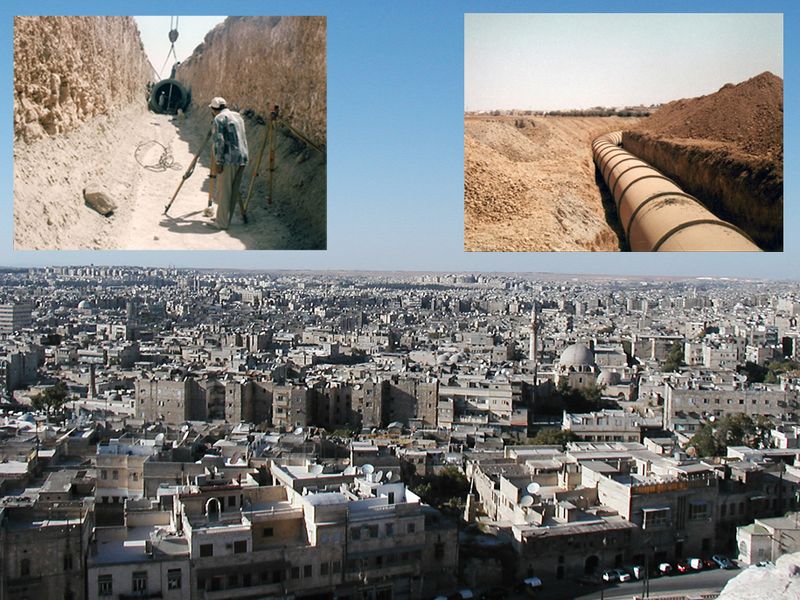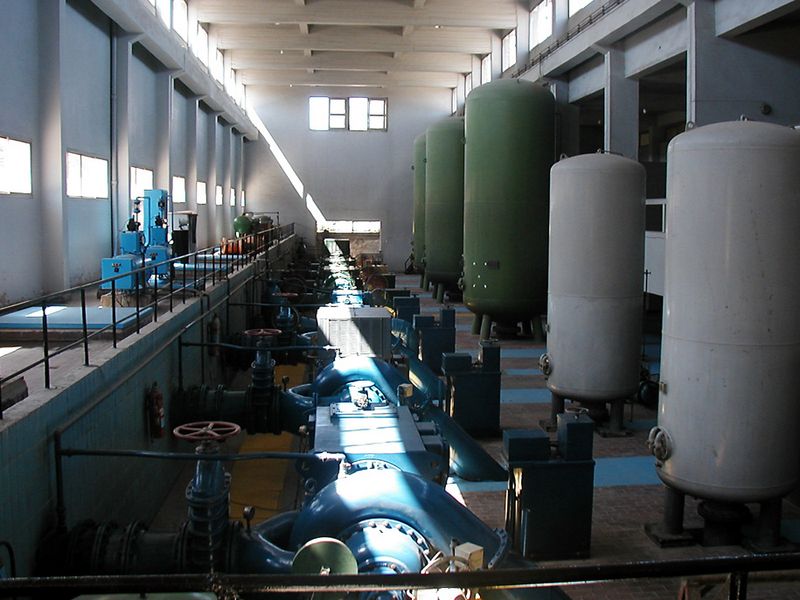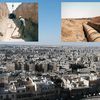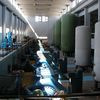Aleppo:Hydraulic Network Analysis of the Water Supply System Aleppo, Syria
Disciplines
-
Hydraulic Engineering
-
Water Supply
Companies
Dorsch International Consultants
Client
Public Establishment of Water Supply and Sewerage (PWSSE) of Aleppo
Duration
From 2004 to 2007Project Activities
- Comprehensive field investigations and base data survey
- Establishment of GIS Unit in PEWSSA and prepara- tion of digital maps, GIS based digital assets register
- Masterplan / development of strategic investment plan for the year 2025 to improve the overall system
- and reduce Non-revenue-water (NRW) and definition of the needed investment program for € 355 million
- Hydraulic analysis of the existing and design of the future water supply system for a population of 4.5 million, and a pipeline network of 2.500 km existing and 852 km planned length
- Design of the primary pipeline transmission system from Lake Assad to the terminal reservoirs in Aleppo
- Feasibility study including preliminary design for KfW and EIB funding, covering about 80% of the services area and an investment volume of € 160 million.
- Special reports on NRW reduction and leakage control, Water Quality, Customer surveys
- Procurement and installation of a bulk metering system (SCADA)
- Training of PEWSSA engineers on GIS, hydraulic modelling, leak detection
- Socio-economic analysis
- Gender analysis and conflict study (peace and conflict assessment)
Contact
Dorsch International Consultants GmbH
München (Headquarters)
80687 München
Germany
Phone: +49 89 5797-0
Fax: +49 89 5797-800
E-Mail: info@dorsch.de
Description
Aleppo is a city with more than 2 million inhabitants but growing fast and with a considerable amount of the population living in so-called informal areas.
The water supply systems consists of 4 water treatment plants, 12 major pumping stations, transmission and distribution pipelines of about 2.600 km length with diameters ranging from DN 100 to DN 1400 and more than 406,000 house connections.
The daily water production amounts to 528,000m3/d, but due to the high demand an intermittent supply regime has to be applied.
The water utility was only able to guarantee a 16-hour supply per day.
The previously available data and maps were not digitised, computerisation was in its early stages and only used for billing.
The project was divided into 2 distinct stages.
Stage 1 covered the analysis of the existing water supply system, hydraulic network analysis and strategic planning as well as the structural re-design of the transmission and distribution systems.
Stage 2 comprises the feasibility study for the proposed rehabilitation project.
In addition the proposed new transmission pipeline of about 115 km length had to be re-designed from open flow channel to a pressurized pipeline system.



